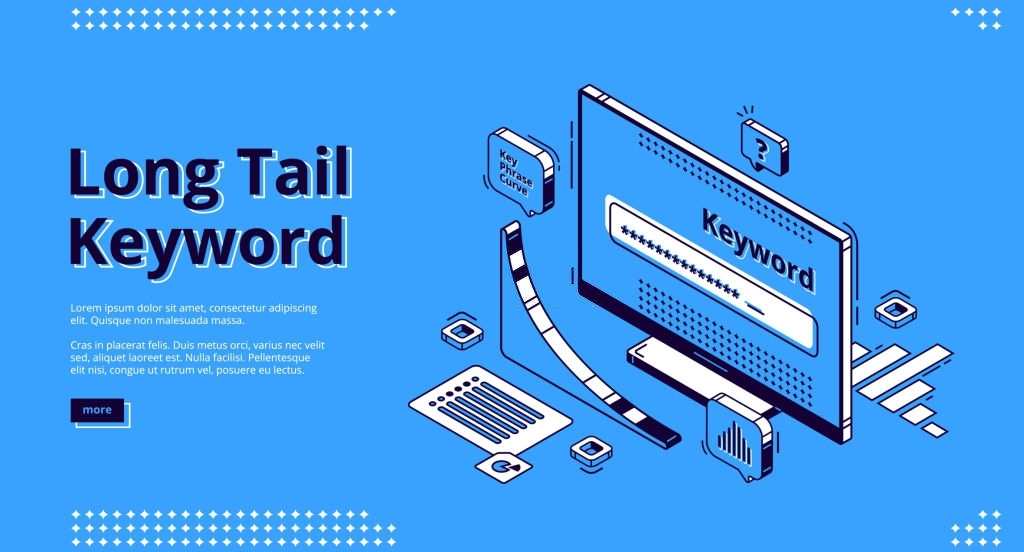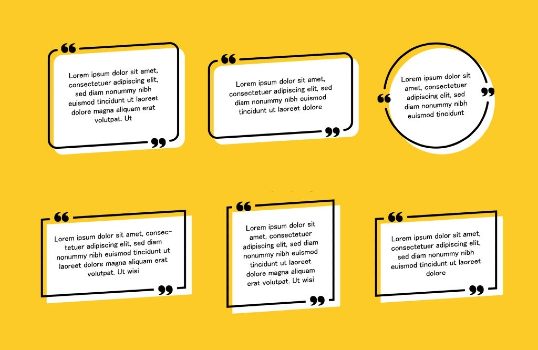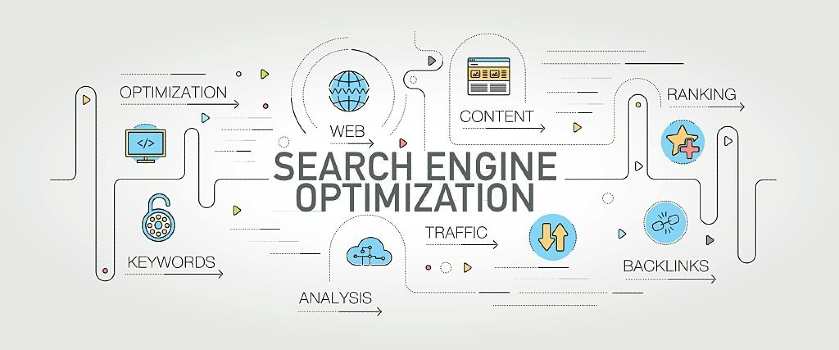How To Improve Traffic Through Long-Tail Keywords?

If keywords have practically always been the fulcrum of any SEO optimization strategy, long-tail keywords represent an extremely powerful (but still underestimated) weapon available to companies that do business online and who want to climb the Google SERP.
Long-Tail Keywords’ importance has grown even more since the rollout of Google RankBrain.
What Is Google RankBrain?

RankBrain is a Google algorithm that uses a machine learning system, i.e. artificial intelligence, to filter the search results and provide users with the most relevant results. Google RankBrain is not an algorithm in its own right, but it is an integral part of the general Google algorithm.
Which Queries Are Influenced By RankBrain?

Released in April 2015, but confirmed on October 26, 2015, Google RankBrain does not process all queries but only those whose meaning is unclear.
According to information made available by Google, 15% of the search queries processed by Google every day are searches that have never been seen before. Translated into numbers, the figure concerns about 450 million queries per day.
RankBrain was created to help filter these results, but in 2015, Google announced that it is also using RankBrain as one of the 3 main ranking factors.
How Does Google RankBrain Work?

Before RankBrain, Google crawled the pages looking for the exact keyword used by the user in the search query. Today, like a human being, the search engine tries to understand the user’s research intent and provide relevant results.
How?
Through the transformation of keywords into the so-called “concepts” entities of which Google knows the meaning.
What are “concept” entities? They are “objects”, “facts” about people, places and things for which Google already has a lot of information and on which it can provide accurate search results.
If Google encounters unknown or ambiguous search terms, thanks to a mathematical algorithm, the entities are divided into more specific words called vectors that lead to certain SERPs.
Since similar queries lead to similar search results, Google is able to associate queries with results that could satisfy the search user. This is possible through the analysis of historical data of the searches performed and user interaction with the queries measured by some metrics (CTR, Bounce rate, Dwell time, pogo-sticking).
How Does Google RankBrain Change SEO?

RankBrain constitutes a significant change in the way SEO is done. Understanding the exact search intent of the user and what content can be most useful to it now becomes a priority.
In this perspective, the transition from focusing on a keyword to focusing on a topic instead has become a mandatory route.
In the modern way of doing SEO, the concept of a page for every single keyword to climb on SERP seems to have gone obsolete. Furthermore, with RankBrain, making several pages with plural forms of the same keyword or variants of it (and related associated URLs) is a strategy that no longer works.
Instead, it is advisable to incorporate everything into a single page that treats the topic as broadly and comprehensively as possible.
Rethinking SEO Strategies Based on Long-tail Keywords
The long-tail keywords owe their name to the former director of Wired USA Chris Anderson who, in his 2004 article, first theorized this concept.
Long-tail keywords are very specific search phrases that have a low search volume and which clearly express the search intent of the user. Because of their specificity, long-tail keywords are usually made up of three or more words.
Why Are Long-tail Keywords Important For SEO?
Long-tail keywords are an important part of your search traffic
Of all the search traffic on the web, long-tail keywords account for around 70%.
- By looking at the phrases for which your website is ranked on the Google Search Console, after the first terms, you will quickly see that the majority are long-tail expressions, which you have not exploited in an optimized way.
- Look at the number of clicks your site receives through these more specific key phrases. You will see that this figure is much higher than the visits you get via the more generic and highly competitive keywords.
It is easy to position yourself on these long-tail keywords
By definition, long-tail terms are terms with low demand and subject to low competition. With almost none of the competitors targeting them, it becomes easy for you to position yourself on the search results.
The long-tail is also useful for paid search advertising campaigns like Google ads
Certainly, when you bid on long-tail keywords the benefit will be twofold. You will be able to get a lower CPC (cost per click) as compared to generic keywords. Plus, you’ll be able to improve campaign performance with a more refined targeting
In terms of ROI (return on investment) and efficiency, it will consequently be preferable to run your google ads for 100 keywords with each generating 10 visits rather than a single keyword that generates 100 visits.
Long Tail keywords also have a bearing on the overall ranking of a website
By implementing a long tail keyword strategy and increasing the number of pages on your website, you can also improve the ranking of the pages on your website.
Google will comprehend this data positively, and there is a good chance that it will increase the overall rating and therefore the overall positioning of your site.
Long tail keywords have a higher conversion rate
As they are more specific, long-tail keywords are also those that have a higher conversion rate. This is possible because of the fact that long-tail keywords reveal a specific intention of the user and therefore have more conversion possibilities.
So, in choosing the keyword on which to position yourself, you must carefully choose those keywords that can bring more “hot leads” instead of users who are further away from the purchase phase.
Long tail keywords are also suitable for voice searches
The use of long-tail keywords is also preferred by Voice search, which is experiencing very strong growth with the improvement in the performance of Siri, Alexa and Google Assistant.
Undeniably, the long-tail keywords are syntactically close to the mode of expression of Internet users for their voice searches.
How To Find Your Own Long-tail Keywords?
1. Use the long tail keywords on which you are already ranked
As mentioned earlier, the best way to do this is to log into your Google Search Console. Go to the Performance tab to see a list of terms for which you are ranked, with the number of clicks and impressions for each. By default, data is displayed for the past 28 days, but you can change this if you want.
At the top of the list, you will see an export button. Click on it to download the full list of terms for which you are referenced on Google.
Then, open the file you just downloaded and review the list. Make sure you keep only the long-tail keywords. Finally, eliminate the long-tail keywords for which you are already ranked # 1. You will end up with the list of terms on which you can improve your ranking (with a little effort). Save the file and go to the next step.
2. Look for new long tail keywords
It is very likely that you already have a list of basic keywords; that is, the most generic terms that you target with your site. It is nevertheless a good idea to search for new long-tail keywords based on this basic list.
For this task, I would not recommend using Google AdWords. Its Keyword Planning tool is indeed designed to show commercial terms exclusively.
Keywords that advertisers do not target (i.e. long-tail phrases with low search volume) will likely not be displayed there at all.
Instead, use the “Autocomplete” and “Associated searches” functions of the search engines. These are great ways to find the long-tail keywords you are looking for.
You can also check pay-per-click statistics (if you do), social media sites, and even popular YouTube videos specific to your niche. There are tons of long-tail terms everywhere. And they are super effective in improving traffic to your site.
Whenever you find long tail terms that are good for your site, select them.
3. Map and mark
Well, now you have a bunch of long-tail keywords for which you can rank your pages with relatively little effort. Now is the time to assign these keywords to the landing pages and do some tagging so that you can navigate your data easily.
Open the file that you created in step 1 with the long-tail keywords that you are targeting. Then, retrieve all the terms found there.
Even if these are keywords that you are already ranked on, it is still a good idea to assign a landing page to each of them (using the same pages that target these long-tail expressions). Thus, you will get a complete list of expressions associated with the landing pages of your site. This will optimize the pages faster and easier in the next step.
4. Optimize content pages
You should now have a long list of long-tail keywords associated with each of the content landing pages. It is an excellent basis for the semantic optimization process itself.
Obviously, if you have a few dozen keywords per landing page, it will not be reasonable (possible) to optimize the page for each of them. Instead, I recommend that you start slowly – incorporating only a few long-tail keywords into the content.
Then see if your ranking improves for synonyms at the same time. The use of a single variation will usually suffice, as Google is very efficient at finding synonyms. As you edit your content, try to use the long-tail keywords in titles, subtitles, and lists.
Also, don’t forget the internal links. They are also great targets for your long-tail keywords. Use the keywords in the anchor text when you link to another page. And make sure the anchors are diverse and natural at the same time. The same goes for backlinks that you can control.
Conclusion
To optimize the long tail in SEO, you must identify the most relevant long-tail keywords that can reach your target. The more specific your keywords, the less competition you have, which allows you to better position yourself and have a better conversion rate.
You can use free tools to generate long-tail keywords: keyword generator tool, search suggestions on Google’s search engine, and do competitive intelligence.
Always keep in mind that your content must match the needs of Internet users and that the targeted keyword will likely be typed!